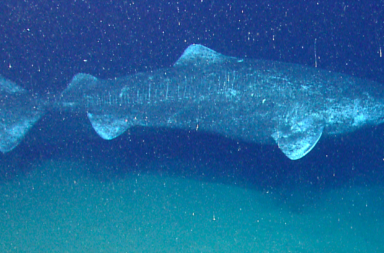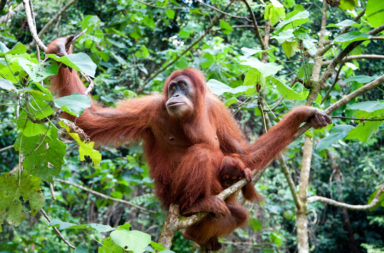A species of rhino was seen in Kalimantan in the Indonesian part of Borneo, the first of its kind to be spotted in the flesh of it’s kind in almost forty years. A female Sumatran rhino was held in a pit trap on March 12, The World Wildlife Fund announced. Sumatran rhinos are among the most endangered large mammals on the planet. There are estimated to be less than one hundred Sumatran rhinos existing in the whole world.
In 2013, when a World Wildlife Fund team first found footprints belonging to a rhino in the jungle, they also captured camera footage of a Sumatran rhino using an automated camera trap. The species, until then was considered extinct in Kalimantan. There are about 15 Sumatran rhinos still existing in Borneo. It is not a lot, but for a species thought to be extinct, it’s remarkable.
They are one of only two species that exist in Indonesia. “This is an exciting discovery and a major conservation success,” announced the CEO of WWF Indonesia Mr. Efransjah. “We now have proof that a species once thought extinct in Kalimantan still roams the forests, and we will now strengthen our efforts to protect this extraordinary species” he added. The World Wildlife Fund had called her story a “new hope.”
A month ago conservationists experienced the first physical contact with a Sumatran rhino after decades. The four- or five-year-old female was safely held in Kutai Barat, with arrangements to transfer her to a protected forest about 90 miles away. But then the WWF announced the sad news of the animal’s unfortunate death.
She was named Najaq, and was said to have been suffering from a leg infection that seems to have been the main reason for the untimely death. Najaq’s death is sad, but an incredible opportunity has opened itself, to save a species that was once thought to be lost. “We now have proof that a species once thought extinct in Kalimantan still roams the forests, and we will now strengthen our efforts to protect this extraordinary species,” said Dr. Efransjah. Najaq may have passed away, but her discovery brought new hope to the conservation of her species.
Numerous rhinos used to roam around Borneo before but they disappeared. They have a significant population pattern with one on Borneo, four on Sumatra and one in the Malay Peninsula. People believe that the decline of rhinos is due to the increase of mining along with extensive agriculture and poaching. They are now almost extinct and are estimated to be less than a hundred world wide.
They are also referred to as Asian two-horned rhinos and are the smallest among their species, but they are in reality big mammals. The head to tail length of a rhino is about 2.38-3.18 meters .Its weight ranges anywhere from 500 to 1,000 kg. A Sumatran rhino’s body is covered by reddish-brown hair, making them the hairiest of their kind too!
The Director of World Wildlife Fund Indonesia’s conservation, Mr. Arnold Sitompul, said that even though the death was still being investigated, it appeared the infection was “severe,” and could have been caused by snares from an earlier poaching event. “This demonstrates the threats tackled by the Sumatran rhino”, Sitompul said. Sumatran rhinos were the smallest and hairiest of the rhinoceros species that were once copious in Southeast Asia. But due to poaching and habitat devastation, their population has been receding, and then sometime last year, the Malaysian part of Borneo Island declared them extinct in the wild.
Sumatran rhinos, like many other species in the area, are constantly under threat from both poachers and loss of environment. By creating sanctuaries for these animals we can try to conserve them their homes that they desperately need to survive. Mr. Tachrir Fathoni, a senior official at the environment ministry announced that the death of this Sumatran rhino proves they exist in Borneo, so they will continue protecting them. “Our hearts are saddened by this devastating news from Kalimantan. There are many lessons to be learned from this event,” the International Rhino Foundation said in a statement. Now given the opportunity, and knowledge of what to do, action is the final step.
Photo By Ltshears – Own work, CC BY-SA 3.0, Link to Photo





